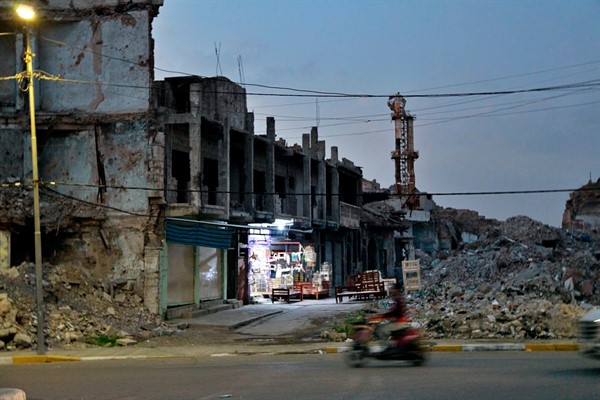Editor’s Note: This is the web version of our subscriber-only weekly newsletter, Middle East Memo, which takes a look at what’s happening, what’s being said and what’s on the horizon in the Middle East. Subscribe to receive it by email every Monday. If you’re already a subscriber, adjust your newsletter settings to receive it.
MOSUL, Iraq—Last week, the inhabitants of Mosul observed the fourth anniversary of their city’s liberation from the Islamic State, in a cityscape scarred as much by the military operation to dislodge ISIS as by the rule of ISIS itself.
The now-defunct caliphate, which governed Mosul from 2014 to 2017, still casts a shadow over daily life in this busy city known for education and commerce, a reservoir of Iraqi initiative and prosperity during decades of dictatorship and war. The government in Baghdad has been firmly in charge of the city in the four years since ISIS was drummed out. Yet most of the Old City remains in ruins. Hundreds of thousands of displaced Moslawis have yet to return home—and, most critically of all, the legacy of ISIS remains unsettled.

